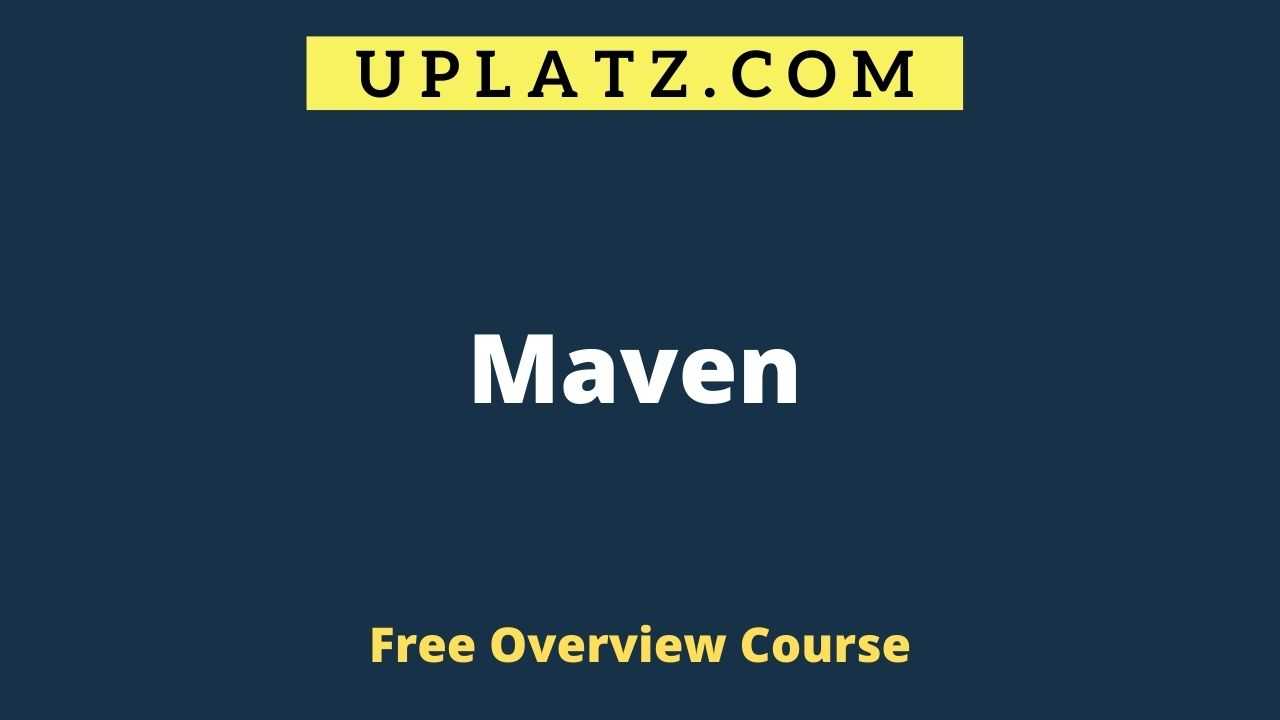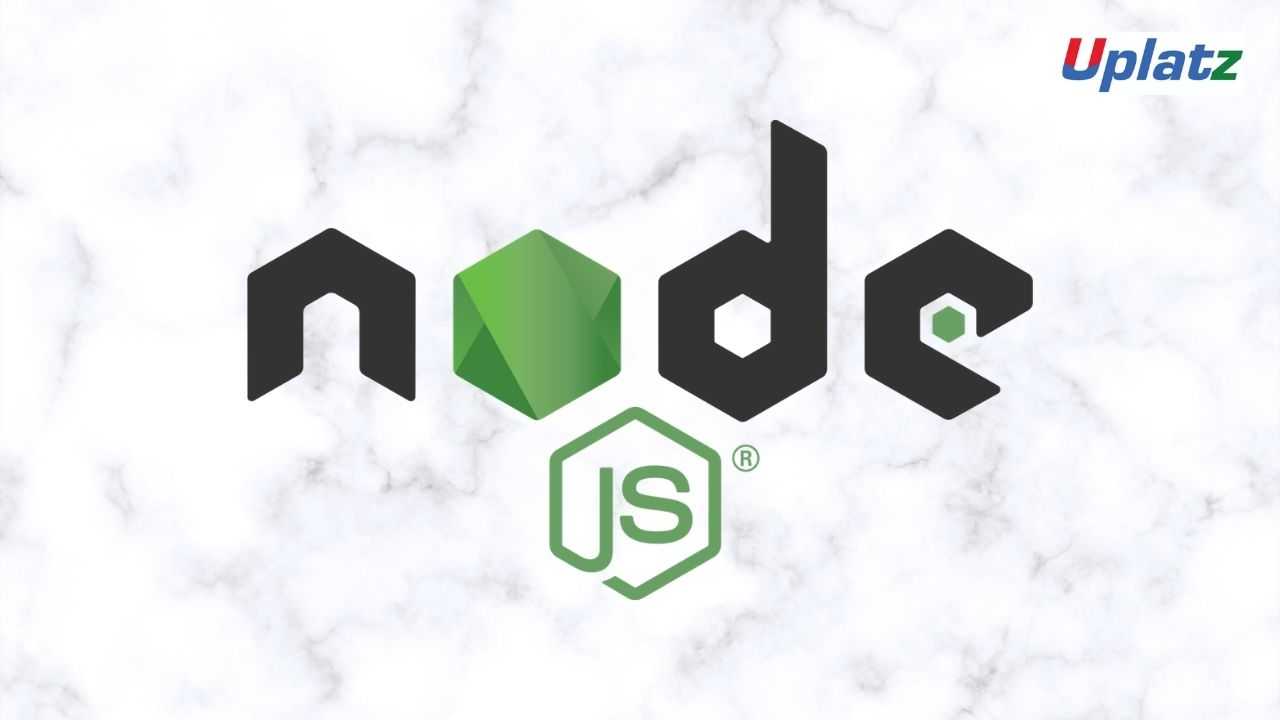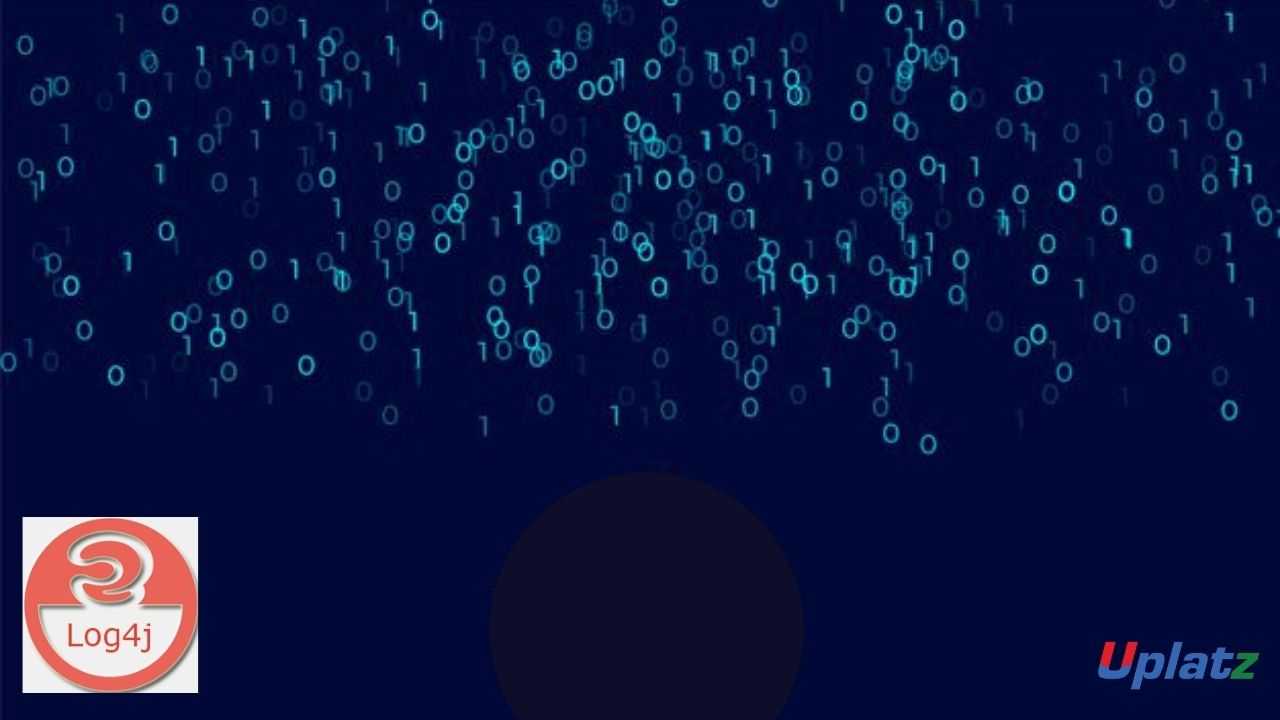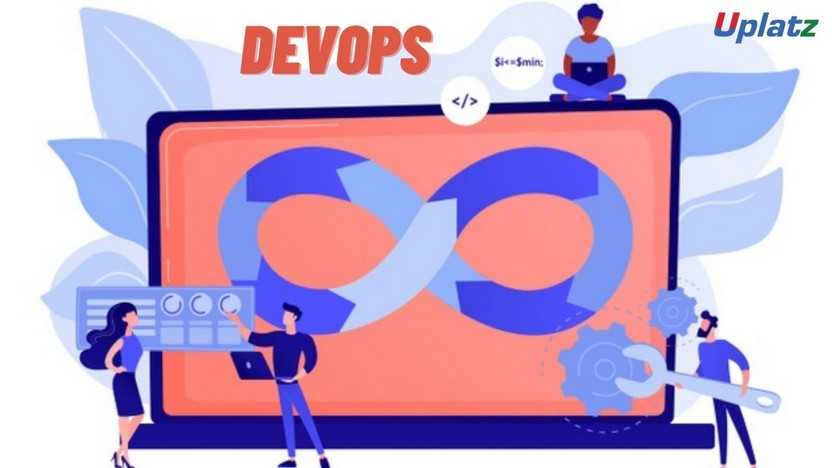Overview Course - Maven
Get complete knowledge about the elements and the functioning of the maven with real time problems of the field. View Course Curriculum
Price Match Guarantee
Full Lifetime Access
Access on any Device
Technical Support
Secure Checkout
Course Completion Certificate
View Course Curriculum
Price Match Guarantee
Full Lifetime Access
Access on any Device
Technical Support
Secure Checkout
Course Completion Certificate
 84% Started a new career
BUY THIS COURSE (GBP 10)
84% Started a new career
BUY THIS COURSE (GBP 10)
-
 90% Got a pay increase and promotion
90% Got a pay increase and promotion
Students also bought -
-

- Node.js
- 21 Hours
- GBP 29
- 1896 Learners
-

- Log4j
- 5 Hours
- GBP 29
- 74 Learners
-

- DevOps
- 20 Hours
- GBP 29
- 1677 Learners

This is an overview course on Maven while the complete detailed-level Maven course is available at -
https://training.uplatz.com/online-it-course.php?id=maven-350
In the Maven overview Course, we will learn and understand the core concepts of Apache Maven. Maven is an advanced software project management tool that can help the developer in the entire process of creation and implementation of a software project. Since operating in Java, it is the ap test environment for Apache Maven.
In Uplatz Maven Online Training tailored for both beginners and professionals, the primary aim is to understand the core concepts of Apache Maven. Once the core concepts are learned, you will be able to use Maven as an automation tool to build and manage any java project in your everyday life.
In maven training, we will learn what exactly maven is. Maven is a popular open-source build tool that the Apache Group developed for building, publishing, and deploying several projects. Maven is written in Java and is used to create projects written in C#, Scala, Ruby, and so on. The element is used to build and manage any Java-based project. It simplifies the day-to-day work of Java developers and helps them with various tasks.
In this Learning Apache Maven training course, expert will teach you how to perform Java builds more efficiently with Maven. Uplatz Maven course is designed for intermediate Java developers. You will start by learning how to build a project, then jump into learning dependency management. From there, we teach you about the Maven lifecycle and plugins, including plugin parameters and custom plugins. This video tutorial also covers goals and plugins, including how to install and deploy a plugin. Finally, you will learn about archetypes, additional features, and the .M2E Eclipse plugin. Once you have completed this training course, you will be fully capable of using Maven to build your own Java projects.
Course/Topic - Maven overview - all lectures
-
This tutorial has been prepared for the student to help them understand the basic functionality of Maven tool. After completing this tutorial, you will find yourself at a moderate level of expertise in using Apache Maven from where student can take themselves to next levels.
-
In this Maven tutorial, we will show you how to install Maven for your Selenium test automation projects and running your first project in this Selenium Maven tutorial.
Create a project from the command line and Eclipse
a) Create a Maven web applications.
b) Learn how to deploy war to Tomcat with Maven.
c) Learn password encryption with Maven.
d) Learn to Execute and skip unit tests with Maven.
e) Learn Maven Plugins and how to use them effectively.
f) Master the most important Maven concepts.
Maven – course curriculum
a).Maven Introduction
b).Downloading and Installing Maven
c).Maven Repositories
d).Creating Maven Standalone Project in CLI
e).What are JAR, WAR, EAR files
f).Maven Build Life Cycle
g).Developing Standalone Maven Project in Non-Interactive Mode
h).Running Test Cases with Maven
i).Creating Maven Web Project in CLI
j).Creating Maven Standalone Project through IDE
k).Creating Maven Web Project through IDE
l).Adding Dependencies to pom.xml
m).Dependency Chain
n).Maven Scopes
The Maven Certification ensures you know planning, production and measurement techniques needed to stand out from the competition.
Maven is chiefly used for Java-based projects, helping to download dependencies, which refers to the libraries or JAR files. The tool helps get the right JAR files for each project as there may be different versions of separate packages.
Maven is a build automation tool and it helps DevOps in providing automation around the Build phase of the DevOps LifeCycle Management. 2) What is a Maven Repository? A Maven repository is the storage place for the entire library jar, project jars and plugins, and all other project artifacts.
Maven is a project management and comprehension tool that provides developers a complete build lifecycle framework. Development team can automate the project's build infrastructure in almost no time as Maven uses a standard directory layout and a default build lifecycle.
Maven. Jenkins is an open-source continuous integration software tool. It was written for testing and reporting. A Maven is a build tool which helps in build and version control. Jenkins came in 2011.
Uplatz online training guarantees the participants to successfully go through the Maven Certification provided by Uplatz. Uplatz provides appropriate teaching and expertise training to equip the participants for implementing the learnt concepts in an organization.
Course Completion Certificate will be awarded by Uplatz upon successful completion of the Maven online course.
The Maven draws an average salary of $120,000 per year depending on their knowledge and hands-on experience.
The Career Maven® signature 3-month coaching framework is designed to help you craft clarity, confidence, and agency around your career & professional strategy with a one-on-one career coaching partnership. This is your time to focus on your unique career story and goals.
Due to the variety of different trading strategies Maven employs, as a team, we have exposure to a wide array of asset classes and products. There are always opportunities to encounter new processes and learn about new markets & products. We get to see the life cycle of a trade from start to finish.
Maven has an overall rating of 3.8 out of 5, based on over 23 reviews left anonymously by employees. 82% of employees would recommend working at Maven to a friend and 56% have a positive outlook for the business. This rating has been stable over the past 12 months.
Note that salaries are generally higher at large companies rather than small ones. Your salary will also differ based on the market you work in.
a).Software Development Engineer(SDE).
b).Associate Quality Engineering Manager.
c).Quality Assurance.
Q1: What is Maven, and what is it used for in Java projects?
Ans: Maven is a build automation tool used primarily for Java projects. It helps manage project build, dependencies, and documentation. Maven simplifies the build process by using a standardized project structure and configuration file (pom.xml). It also handles project dependencies, builds lifecycle, and plugins for compiling code, running tests, and packaging applications.
Q2: What is a POM file in Maven?
Ans: POM stands for "Project Object Model." The POM file, named pom.xml, is the fundamental unit of configuration in Maven. It contains information about the project, such as its dependencies, plugins, goals, and build settings. The POM file defines the project's structure and configuration, including its artifacts, repositories, and other settings necessary for building the project.
Q3: What are Maven phases, and can you name a few?
Ans: Maven phases are part of the build lifecycle that Maven follows to process a project. Each phase represents a stage in the build process. Common phases include:
a).validate: Validates the project to ensure all information is correct.
b).compile: Compiles the source code of the project.
c).test: Runs tests using a testing framework like JUnit.
d).package: Packages the compiled code into a JAR or WAR file.
e).install: Installs the package into the local repository for other projects to use.
f).deploy: Deploys the package to a remote repository for sharing with other developers.
Q4: How do you add dependencies in a Maven project?
Ans:Dependencies are added to the pom.xml file under the <dependencies> section. Each dependency is defined using a <dependency> element with the following sub-elements:
a).groupId: The group or organization that produces the dependency.
b).artifactId: The specific dependency or library name.
c).version: The version of the dependency.
Example:
xml
Copy code
<dependencies>
<dependency>
<groupId>org.apache.commons</groupId>
<artifactId>commons-lang3</artifactId>
<version>3.12.0</version>
</dependency>
</dependencies>
Explanation: This example adds the commons-lang3 library from Apache Commons with version 3.12.0 as a dependency.
Q5: What is a Maven repository, and what types are there?
Ans: A Maven repository is a location where project artifacts (libraries, JAR files, etc.) are stored and managed. There are three main types of Maven repositories:
a).Local Repository: A repository on the developer's local machine, typically located in the .m2/repository directory. It stores artifacts downloaded from remote repositories or built locally.
b).Central Repository: The default remote repository provided by Maven Central, containing a vast collection of libraries and artifacts.
c).Remote Repository: Custom repositories hosted by organizations or third-party services. These can be specified in the pom.xml or settings.xml files to retrieve dependencies.
Q6: What is a Maven plugin, and can you give an example?
Ans: A Maven plugin is a tool that extends Maven's capabilities by adding specific functionality to the build process. Plugins perform various tasks, such as compiling code, running tests, and packaging applications.
Example: The maven-compiler-plugin is used to compile the project's source code.
Example Configuration:
xml
Copy code
<build>
<plugins>
<plugin>
<groupId>org.apache.maven.plugins</groupId>
<artifactId>maven-compiler-plugin</artifactId>
<version>3.8.1</version>
<configuration>
<source>1.8</source>
<target>1.8</target>
</configuration>
</plugin>
</plugins>
</build>
Explanation: This configuration specifies that the project should be compiled using Java 1.8.
Q7: How does Maven handle project inheritance and multi-module projects?
Ans: Maven supports project inheritance and multi-module projects through its POM structure:
a).Inheritance: A project can inherit from a parent POM file, which allows for sharing common configuration, dependencies, and plugin definitions. The child POM extends the parent POM and can override or add specific configurations.
Example:
xml
Copy code
<parent>
<groupId>com.example</groupId>
<artifactId>parent-project</artifactId>
<version>1.0.0</version>
</parent>
Multi-module Projects: A parent POM can manage multiple sub-modules, allowing for centralized management of dependencies and builds. Each sub-module has its own POM file, and the parent POM aggregates them.
Example Parent POM:
xml
Copy code
<modules>
<module>module1</module>
<module>module2</module>
</modules>
Explanation: The parent POM lists its modules, and each module has its own directory and POM file.8. How can you execute Maven goals from the command line?
Q8: How can you execute Maven goals from the command line?
Ans: Maven goals can be executed from the command line using the mvn command followed by the goal or phase you want to run. For example:
a).Compile the project: mvn compile
b).Run tests: mvn test
c).Package the project: mvn package
d).Install the package: mvn install
e).Explanation: Each command corresponds to a specific goal or phase in the Maven build lifecycle.
Q9: How do you specify a Maven profile, and what is its purpose?
Ans: Maven profiles are used to customize the build process for different environments or conditions. They allow you to define configurations that can be activated based on specific criteria.
Example Profile Configuration:
xml
Copy code
<profiles>
<profile>
<id>dev</id>
<properties>
<env>development</env>
</properties>
</profile>
</profiles>
Activating a Profile:
bash
Copy code
mvn clean install -Pdev
Explanation: This command activates the dev profile, which applies the configurations defined under that profile in the pom.xml.
Q10: What is the Maven lifecycle, and can you describe its phases?
Ans: The Maven lifecycle is a sequence of phases that define the build process of a project. Each phase performs a specific task. The default lifecycle has the following phases:
a).validate: Validate the project's structure and configuration.
b).compile: Compile the source code.
c).test: Run unit tests.
d).package: Package the compiled code into a JAR or WAR file.
e).verify: Perform additional checks on the package.
f).install: Install the package into the local repository.
g).deploy: Deploy the package to a remote repository.









